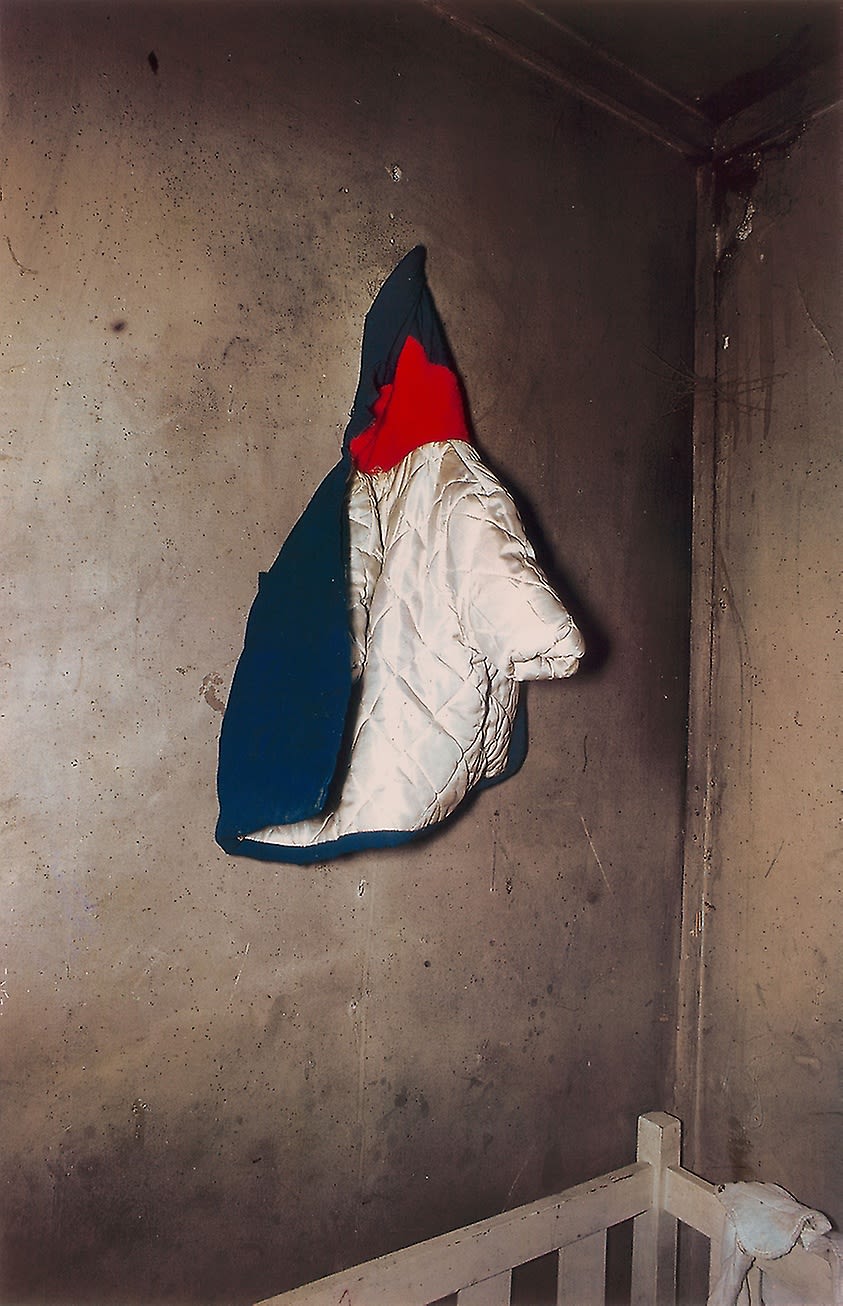In the Museum with
Julietta Cheung
William Eggleston, Near Jackson, Mississippi, ca. 1970

William Eggleston, Near Jackson, Mississippi, ca. 1970, printed 2002, dye imbibition print
William Eggleston, Near Jackson, Mississippi, ca. 1970, printed 2002, dye imbibition print
by Zoya Brumberg (MA 2015)
A red, white, and blue winter coat hangs by the corner of a wall. Water stains creep from the ceiling.
Cobwebs, stains, and punctures pepper the dull brown wall. At the bottom right corner of the photographic frame, we see the edge of a baby’s crib. With some sense now of the scale, it seems that the coat may be that of a child. The red-and-blue hood forms a point where it is pinned against the wall, yet the white lining is the dominant hue that photographer William Eggleston reveals in the 1970 photograph Near Jackson, Mississippi.
For School of the Art Institute of Chicago faculty member Julietta Cheung, Eggleston’s photograph raises questions about what the artist leaves in and outside of the frame, what the viewer can see and what they must infer. Eggleston’s photograph reminds us of the American flag by placing the red, white, and blue coat in the midst of a dulled brown background. The image itself is uncomplicated, but the connotations it invites are complex—even disturbing—for the viewer. While the title of the work places the audience in the American South, the pointed hood above the white coat lining suggests to many disturbing images of the Ku Klux Klan. Looking at the photograph more closely, the viewer sees the dilapidation of the scene, the markers of neglect on the wall, perhaps the cobwebs and its faded color signifying only the passage of time. The crib in the foreground alludes to future generations and the ways we train our youth. Yet ultimately, none of this information is fully articulated in the photograph itself. What we see in the photograph stems from our own assumptions and anxieties.
As assistant professor of contemporary practices, Cheung encourages her students to consider their work’s relationship with their audience. What a work of art invites has as much to do with the ways it challenges the viewer to critically examine their own relational positions, which is why Cheung is interested in this photograph. At a time when facts are disputed and news often comes fast and furiously in the form of a 140-character tweet or a barrage of alerts pushed to our phones, it might seem counterproductive to slow down as we look. But that is precisely what Eggleston’s photograph is asking of us: to contemplate our relationship with American history—and with each other—through the thoughtfulness of looking outside the frame. ■

